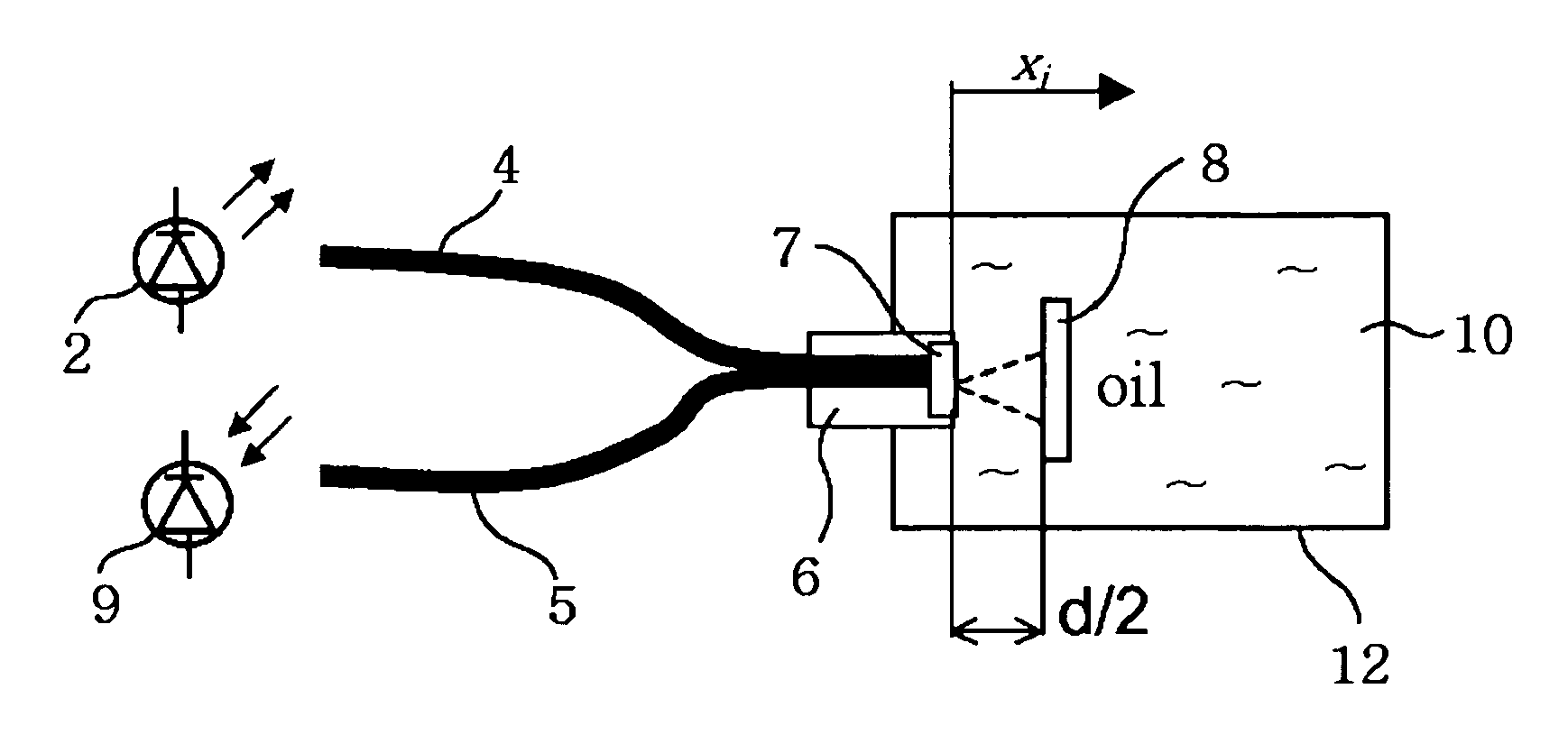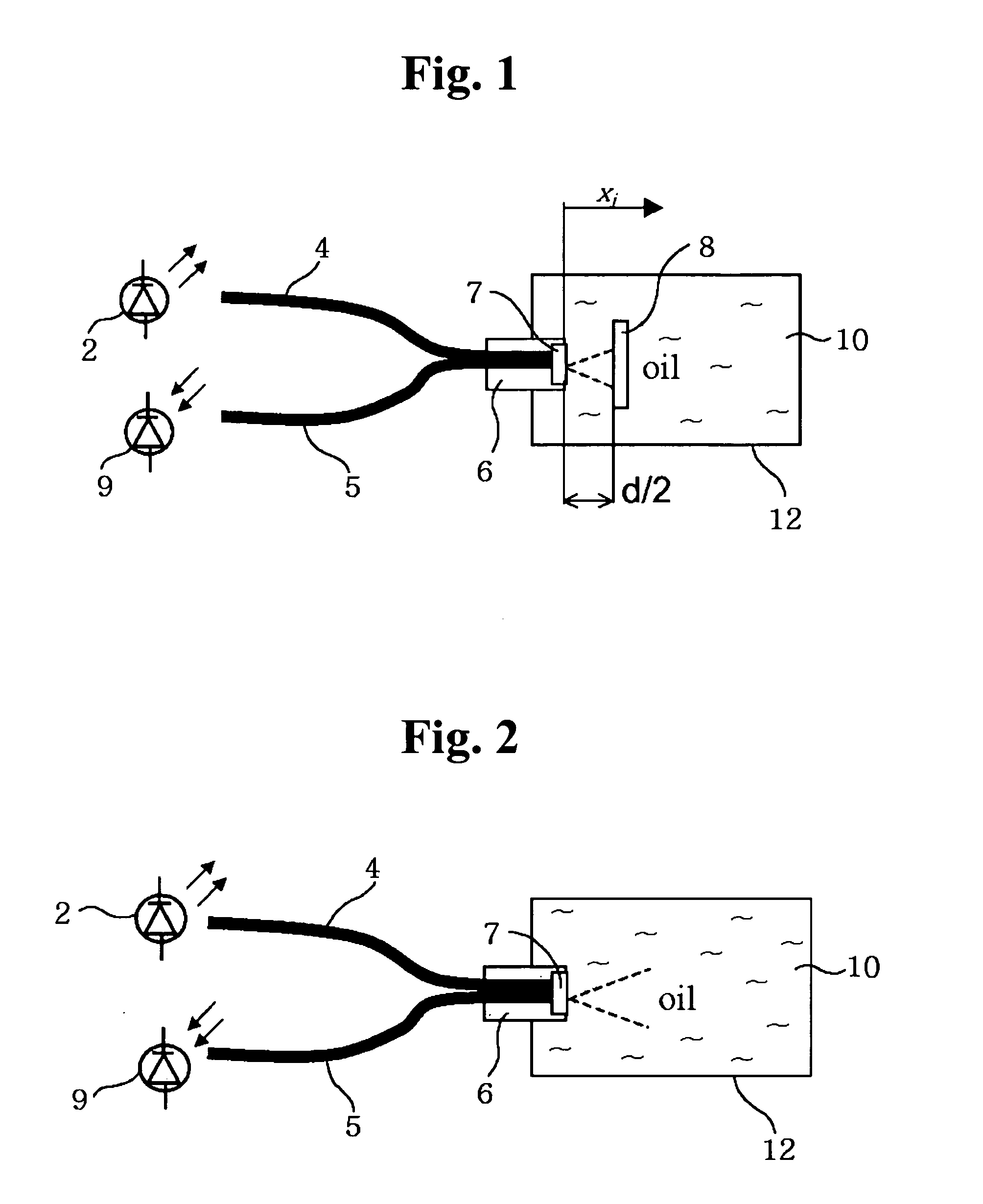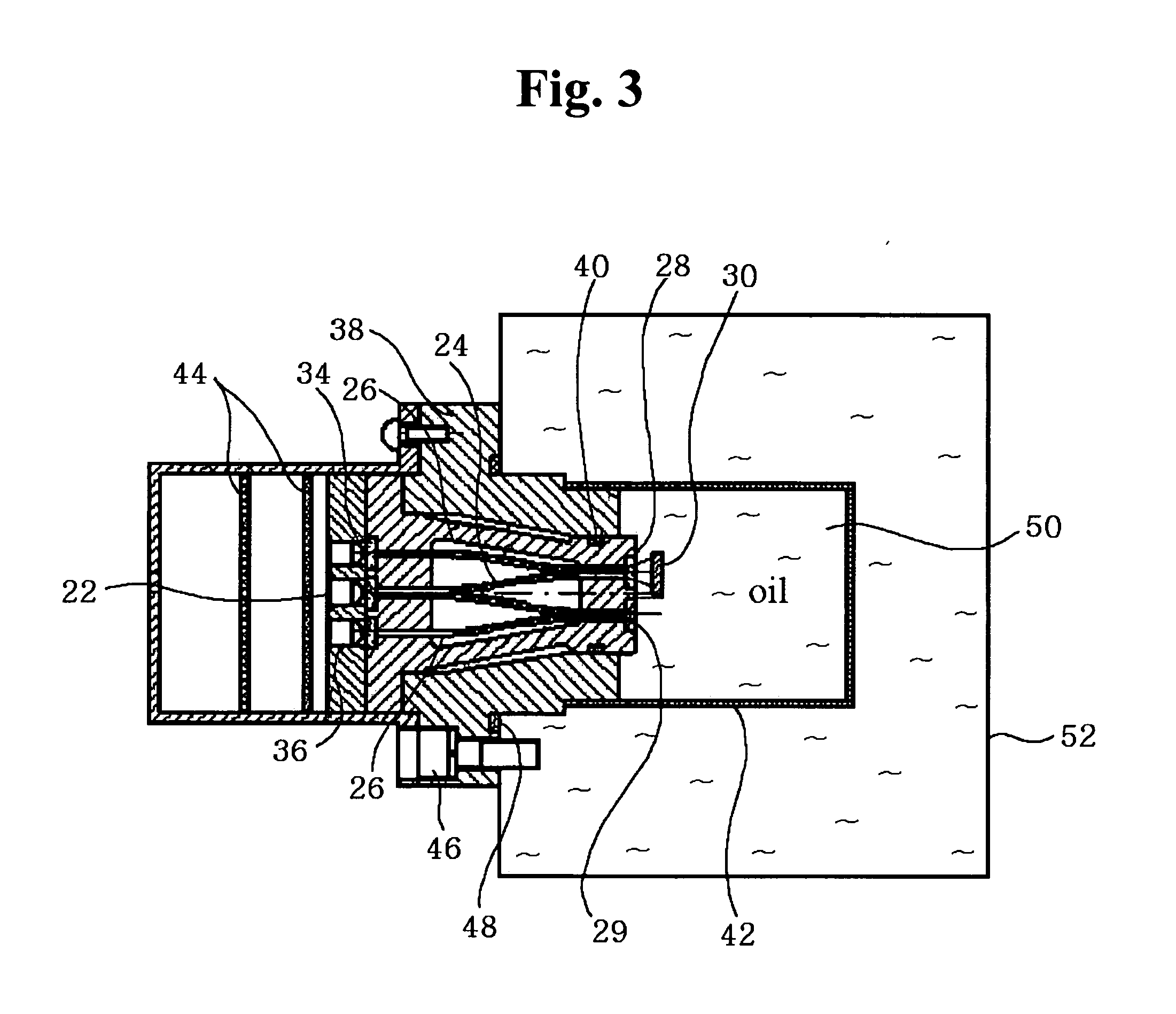Apparatus for measuring oil oxidation using fluorescent light reflected from oil
a technology of fluorescent light and oil, which is applied in the direction of fluorescence/phosphorescence, instruments, and analysis by material excitation, etc., can solve the problems of affecting the performance of the engine, so as to achieve the effect of reducing the cost of the instrumen
- Summary
- Abstract
- Description
- Claims
- Application Information
AI Technical Summary
Benefits of technology
Problems solved by technology
Method used
Image
Examples
Embodiment Construction
[0028] It will be readily understood that the components and steps of the present invention, as generally described and illustrated in the Figures herein and accompanying text, could be arranged and designed in a wide variety of different configurations while still utilizing the inventive concept. Thus, the following more detailed description of the preferred embodiments of the system and method of the present invention, as represented in FIGS. 1 through 5 and accompanying text, is not intended to limit the scope of the invention, as claimed, but it is merely representative of the presently preferred embodiments of the invention. The presently preferred embodiments of the invention will be best understood by reference to the drawings, wherein like parts or steps are designated by like numerals throughout.
[0029] When light passes through a medium, such as oil and the like, a certain amount of light is absorbed by the molecules of the medium and dispersed. This attenuation phenomenon...
PUM
| Property | Measurement | Unit |
|---|---|---|
| dielectric constant | aaaaa | aaaaa |
| dielectric constant | aaaaa | aaaaa |
| dielectric constants | aaaaa | aaaaa |
Abstract
Description
Claims
Application Information
 Login to View More
Login to View More - R&D
- Intellectual Property
- Life Sciences
- Materials
- Tech Scout
- Unparalleled Data Quality
- Higher Quality Content
- 60% Fewer Hallucinations
Browse by: Latest US Patents, China's latest patents, Technical Efficacy Thesaurus, Application Domain, Technology Topic, Popular Technical Reports.
© 2025 PatSnap. All rights reserved.Legal|Privacy policy|Modern Slavery Act Transparency Statement|Sitemap|About US| Contact US: help@patsnap.com



